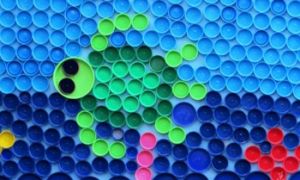Painting is one of the most vibrant ways that young children can experience the wonder of Art. Exploring the world of colours, textures, lines and forms can not only help children express their creativity and emotions but facilitate physical, cognitive and social development too.
The following article provides strategies on how you can encourage children with painting.
Provide Variety
Introduce children to paints of different types like watercolour, tempera, acrylics and even oils. Among the many purposes of art in early childhood education is to provide a varied sensory diet and this can happen when children are encouraged to explore different paints and textures. Also give children access to a variety of materials like coloured pencils, chalk, play dough, markers, crayons, oil pastels and tools to work with like brushes, cotton balls, Q-tips, scissors and stamps. Make things even more interesting by mixing in unexpected materials like dry leaves, cut vegetables and uncooked pasta but ensure that all art materials are non-toxic materials and children can experience the process without injury.
Set the scene
It is important to create the right physical environment for young children to paint – like large pieces of paper so that they can freely use their arms and bodies as well as a variety of brush sizes to experiment with lines and also find what they can easily control. It is a good idea to offer smaller quantities of paint so that there are fewer spills and children can mix colours without wasting paint. Also, see that easels are kept at an appropriate height and chairs are from tables to allow children to stand and paint if they wish. As far as possible, ensure that children paint in natural light and have access to a range of influences, ranging from still life indoors and natural scenes outdoors to the works and styles of famous artists from around the world,
Encourage Agency
Build children’s sense of agency by equipping them will the skills to paint independently. For example, show them where art supplies are kept and encourage them to come forward when they wish to paint or wish for specific supplies. Also helping them learn practical skills like how to clip paper to an easel or tape to a table, where to place it for drying and how to clean up properly will help them feel more self-assured in their artistic explorations.
Be Engaged
Show interest in what a child is creating with open-ended questions and comments like “Tell me about your picture” or, “I noticed you are pushing your brush flat”. Then wait to see how they respond – they may think about what you just said or just wish to get on with their painting. When they seem ready to share, think of thought-provoking questions, like, “How did pushing your brush flat help you with your painting – did it make the lines bigger or smaller?”. Such questions and comments not only encourage children to think about their use of colours, shapes and art materials but help them form connections between ideas, emotions, form as well as cause and effect.
Focus On Process
Above all, it keeps the focus firmly on the process and not the final product. When children feel they are expected to make their paintings look a certain way, they not only lose agency but eventually interest as well. Even when they are exploring a technique like finger-painting, avoid pointing out any correct or right method to do it – model it once or twice and then let children do it however they wish to.
Giving children a creative outlet can help relieve stress and work through things happening in their lives. By encouraging artistic expression, you can help facilitate learning.
References:
Painting With Young children, PSU
Introduction To Visual Arts In EC, Education Hub
How Art Helps Children Thrive, University Of Wollongong Australia
The Art Of Creating, Michigan State University



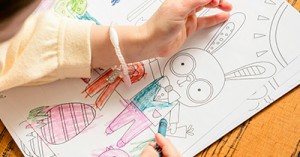
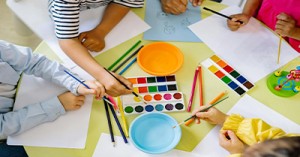
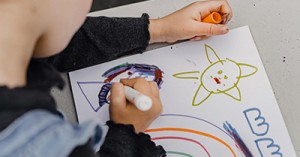
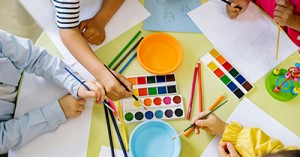
 As an Educator in Australia, your pay rate falls under the Children’s Services Award 2010. This award states the minimum amount that an employer can
As an Educator in Australia, your pay rate falls under the Children’s Services Award 2010. This award states the minimum amount that an employer can When working as a qualified Early Childhood Teacher (with a university degree) within a service, your rate of pay will come from the Educational Services
When working as a qualified Early Childhood Teacher (with a university degree) within a service, your rate of pay will come from the Educational Services When working as a Diploma Qualified Educator your pay rate is from the Children's Services Award 2010. This Award states your minimum rate of pay
When working as a Diploma Qualified Educator your pay rate is from the Children's Services Award 2010. This Award states your minimum rate of pay When working as a Cert 3 Qualified Educator, your pay rate is from the Children's Services Award 2010. This Award states your minimum rate of
When working as a Cert 3 Qualified Educator, your pay rate is from the Children's Services Award 2010. This Award states your minimum rate of Educational Leaders play a crucial role in their early childhood service by ensuring that the educational program aligns with best practices and supports the holistic
Educational Leaders play a crucial role in their early childhood service by ensuring that the educational program aligns with best practices and supports the holistic In early childhood education and care, ratios are more than a technicality—they are a frontline safeguard. Every child deserves responsive supervision, emotional connection, and developmental
In early childhood education and care, ratios are more than a technicality—they are a frontline safeguard. Every child deserves responsive supervision, emotional connection, and developmental Here’s a comprehensive Mobile Phone and Smart Watch Policy tailored for early childhood education and care (ECEC) services in Australia, aligned with the latest 2025
Here’s a comprehensive Mobile Phone and Smart Watch Policy tailored for early childhood education and care (ECEC) services in Australia, aligned with the latest 2025 With the new national child safety reforms kicking in on 1 September 2025, early childhood services like yours have a real opportunity to lead the
With the new national child safety reforms kicking in on 1 September 2025, early childhood services like yours have a real opportunity to lead the The Sea of Fish Challenge is a national initiative that invites children, educators, families, and communities to create and display fish artworks as a symbol
The Sea of Fish Challenge is a national initiative that invites children, educators, families, and communities to create and display fish artworks as a symbol Across the early childhood education and care sector, educators are sounding the alarm: current staffing ratios are insufficient to deliver safe, meaningful, and developmentally appropriate
Across the early childhood education and care sector, educators are sounding the alarm: current staffing ratios are insufficient to deliver safe, meaningful, and developmentally appropriate
